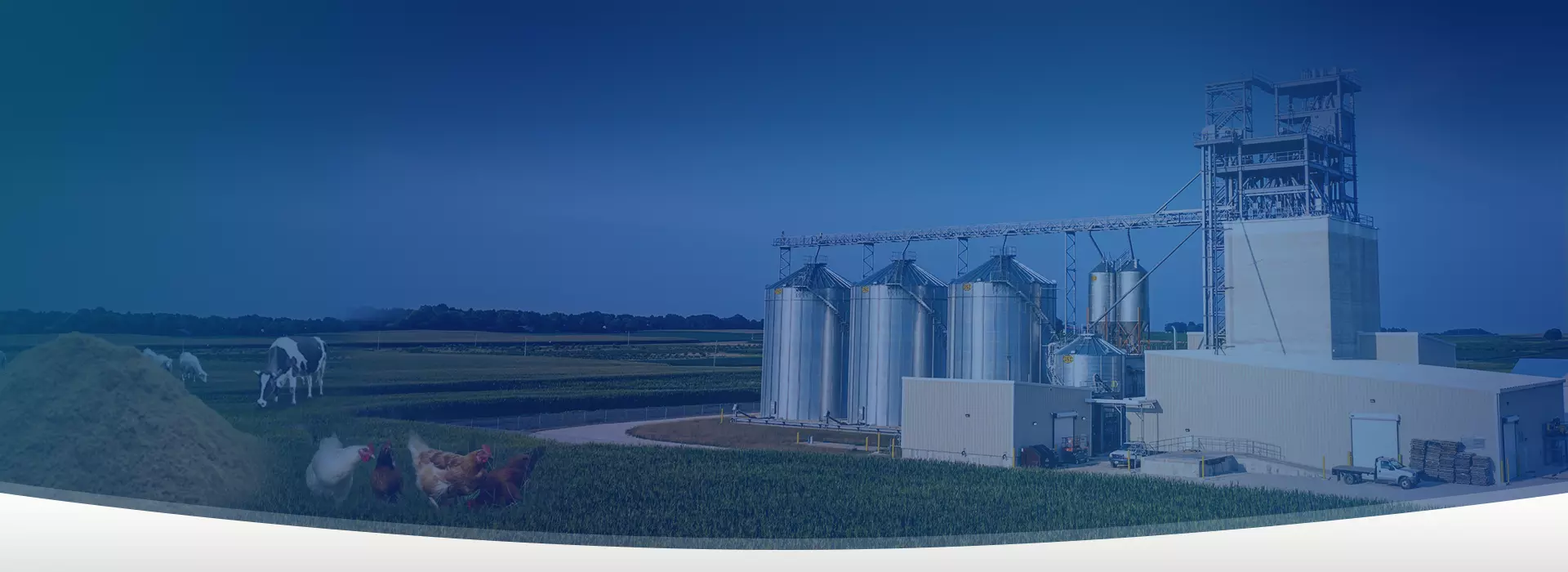
Premix Feed Mill
Premix feed mill is a complete feed line for mixing vitamins and other desired ingredients with the main feed. It has complete compounding and formulation preparation facilities to produce high quality premixes with high efficiency and precision.
About Premix feed mill
Premix plants are facilities within feed mills that are responsible for preparing precise combinations of micro-ingredients, such as vitamins, minerals, amino acids and additives, essential for animal nutrition.
These facilities have equipment for dosing, mixing and storing ingredients in specific proportions, ensuring their correct incorporation into the feed manufacturing process.
First of all, let’s understand what is premix. Premix is one or more kinds of additives for mixing with compound feed. People often regard premix as the heart of compound feed, which shows the important role of premix in compound feed.
However, premix is not simply a combination of different raw materials, it is a highly technical product. It is a highly technical product, because its composition is extremely complex and many kinds of small quantities, physical and chemical properties and the great difference, but also in the safety and stability and other aspects of the problem, which increases the complexity of the premix plant production premix.
To build a premix plant to produce high quality premix products, it is necessary to comprehensively consider the factors of raw material procurement, formulation design, production management, quality control and other aspects.
The features of the premix feed mill
- The premix feed plant is thoughtfully designed to be both highly efficient and hygienic, making the entire process smooth and worry-free.
- By minimizing the number of times materials are moved, it greatly reduces the risk of cross-contamination, giving you confidence in the safety of your feed.
- The finished product area is smartly placed right under the mixer to avoid unnecessary handling and prevent any mix-ups between batches.
- The mixing and packaging steps are seamlessly connected, ensuring fast and steady production without hiccups.
- Every detail, from process flow to equipment layout, is carefully planned to work perfectly with a feed pellet machine for sale, delivering a clean, safe, and eco-friendly feed production system that truly meets your needs and helps your business thrive.
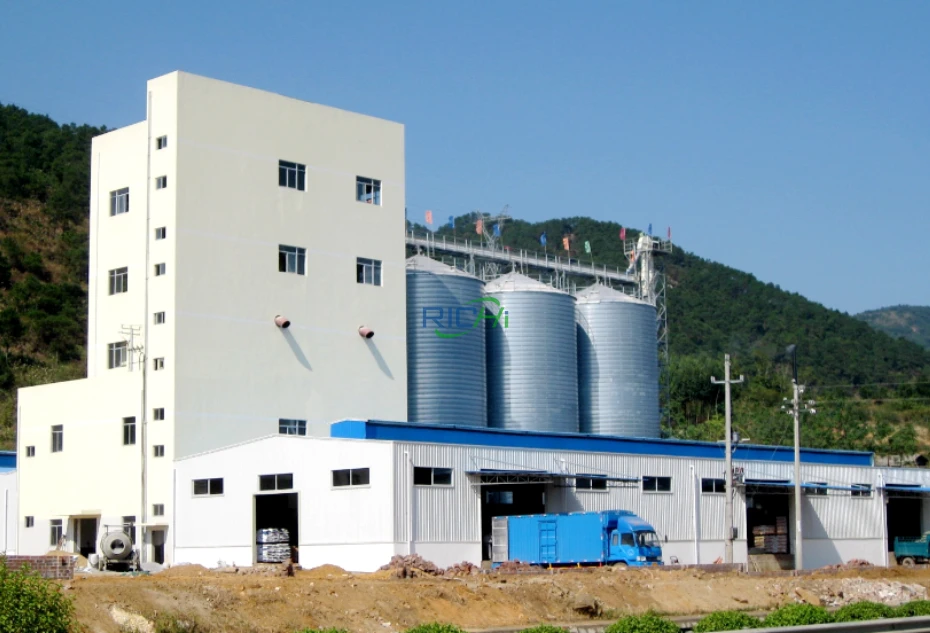


Premix Feed mill Process Requirements
Dust control
The materials handled in the premixing workshop are mostly powders with very fine particle size, which can be easily inhaled into the human body, which is unfavorable to the health of the staff and can’t pass the environmental protection requirements. Therefore, dust removal devices should be set up in each feeding port and packing port for directional dust removal.
stainless steel production
No matter what kind of process, from the premixer mixer, from the small material adding bucket to packing, all parts in contact with the material are made of stainless steel, which can effectively prevent corrosion.
The pre-treatment stage of raw materials
Pre-mixed materials for the dosage precision requirements are very high, the dosage scale accuracy must reach the dynamic 0.1%, static 0.3% of the standard.
premix feed Mixer
The effective volume of the main mixer in the premixing workshop is at least 1 cubic meter, using stainless steel double-axis paddle mixer and single-axis paddle mixer, with high mixing efficiency, low residue and high uniformity.
premix feed Automatic packing
It is recommended to use automatic packing and palletizing in premix workshop. Manual packing is not only low precision and low efficiency, but also increase labor costs, dust spillage is serious, affecting the health of workers.
Premix feed mill production process
— Richi Machinery —
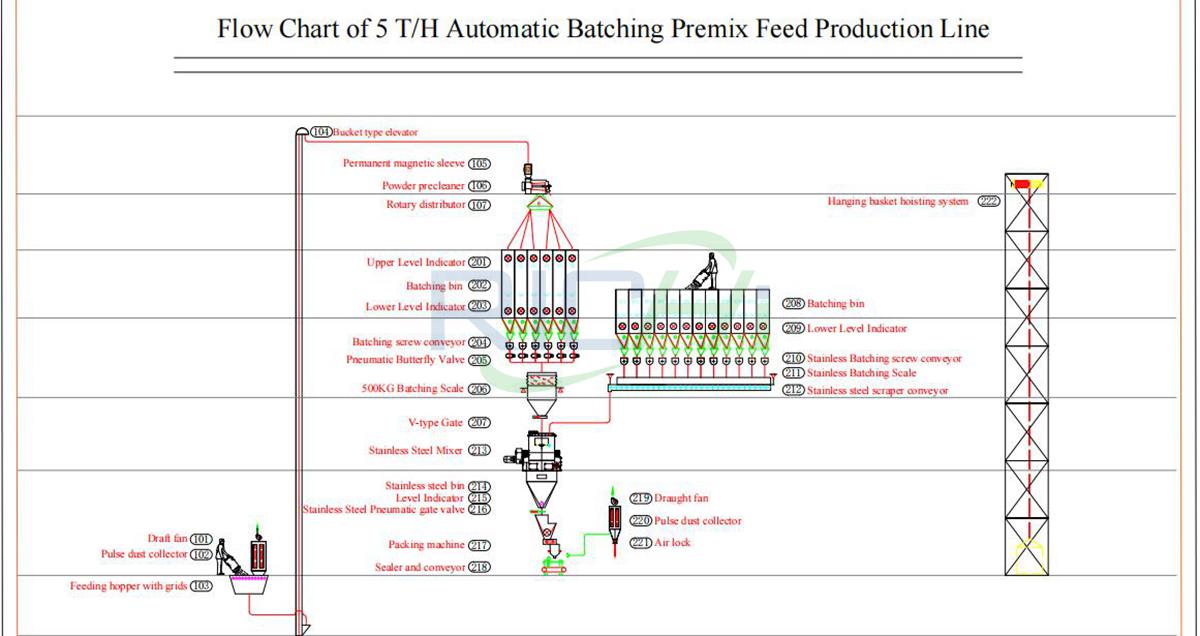
Premix plant on the production process and equipment requirements are extremely strict, because the slightest difference may cause inaccurate dosage, resulting in waste of raw materials or the production of premix out of the effect is not good.
The above figure is the flow chart of 5T/H automatic batching premix production line, through this flow chart we can roughly understand the production process of premix feed plant.
Premix production process is affected by raw material varieties, formulas, production types, plant structure, capital and other factors, according to the actual situation of different customers need to be directed to design, design the program that best meets their own.
Generally speaking, the production process of premix feed plant mainly includes raw material receiving, raw material cleaning, batching, mixing, packaging and so on.
Raw material receiving
Firstly, the materials prepared according to the formula will be stored in the raw material warehouse. The receiving equipment mainly includes weighing system, inspection instrument, unloading system, cleaning system, dust control equipment, receiving conveyor, fabric machine, hopper and so on. It is worth mentioning that the equipment of our premix plant is made of stainless steel in the contact part with the material, which will not cause pollution to the material.
Cleaning section
After receiving the raw materials, it is necessary to clean the raw materials to remove impurities. This process can clean out the impurities that may be contained in the raw materials, but also can sort out the coarse raw materials that need to be crushed.
Crushing section
Next, an animal feed hammer mill is used to reduce the particle size of the material to the required screening standard, which helps to ensure the quality of the premix.
Batching section
Batching is a critical step in the premix. The accuracy of the dosage determines the quality and usability of the premix. Therefore, this process must be strictly controlled, focusing on the choice of processing technology. According to the premix formula, add the materials to the weighing bin in order and weigh them.
Mixing section
Mixing uniformity is also a key indicator to test the quality of premix. As a highly concentrated intermediate product, premix is composed of various trace elements, and the proportion of each component varies greatly during the processing of premix, so it is necessary to choose a high-efficiency, low-residue feed mill mixer as well as a reasonable processing technology.
In order to make the premix mixing uniformity higher, the mixing part should be divided into two steps: micro-mixing and macro-mixing. Macro-mixing is both the mixing of all the components of the premix with the reagents of the carrier in the interstitial mixer, which is a typical function of an animal feed mixer machine. Micro-mixing, on the other hand, refers to the mixing of trace ingredients with a weight less than 1% of the mixer capacity.
Packaging section
After mixing, the production of premix is basically completed. The next step is the packaging section of the premix. In addition to maintaining the image of the product, the packaging section pays particular attention to maintaining the stability of the trace elements and protecting the integrity of the premix.

Project Cases related to premix feed mill
RICHI Machinery, as a pelletizer manufacturer with 30 years of experience, not only provides high efficiency pellet mill equipment, but also a wide range of high quality feed processing equipment, and can customize the pelleting solution turnkey project according to your trial needs. Below are some examples of premix plant projects we have undertaken for your reference.
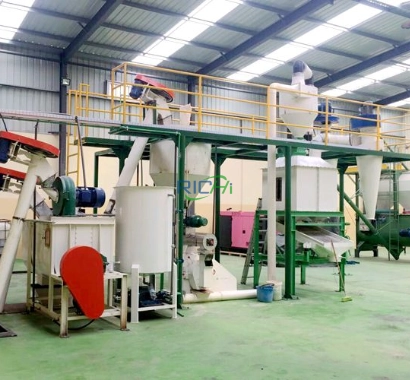
2024.05
3-5 T/H chicken Premix Feed Mill for Sale Canada
- Project Description: A medium-sized poultry farm in Canada planned to build a 3-5 ton/hour premix pelleting line to meet diverse chicken feed needs.
- Client Requirements: Required a highly efficient and stable chicken premix pelleting system to ensure uniform feed ratios, support rapid switching between multiple recipes, and be easy to operate.
- RICHI Solution: Provided a 5 T/H chicken premix feed pellet mill equipped with an intelligent automatic control system and efficient mixing equipment, ensuring uniform feed mixing, stable operation, and easy maintenance.
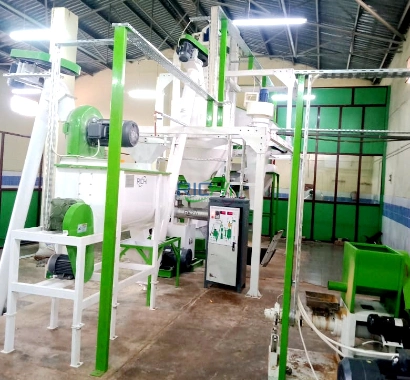
2023.03
5 T/H Livestock Premix Feed Mill for Sale Australia
- Project Description: A large livestock feed processing plant in Australia invested in a 5-ton/day livestock premix pelleting line for preparing feed for a variety of animals, including pigs, cattle, and sheep.
- Client Requirements: The equipment needed to ensure uniform premix composition and stable output, be energy-efficient and environmentally friendly, and adapt to switching between multiple animal feed recipes.
- RICHI Solution: Provides a 5T/H livestock premix feed pelletizer equipped with a high-efficiency mixer and intelligent control system to ensure uniform feed, energy efficiency, and low operating costs.
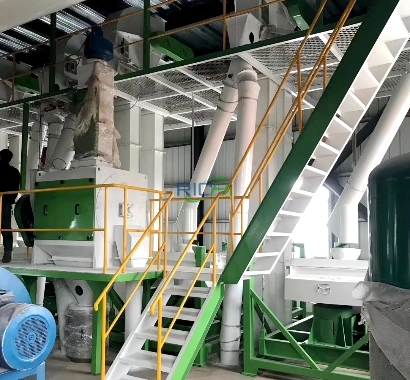
2024.09
8 T/H Poultry Premix Feed Mill for Sale Germany
- Project Description: A large German premixes for poultry feed company upgraded its production line and expanded production to 8 T/H, improving production efficiency and product quality.
- Client Requirements: Advanced pelletizing equipment was required that supported diverse formulations and efficient mixing, and that was easy to clean and maintain, meeting environmental standards.
- RICHI Solution: Provides a 8T/H poultry premix feed pelletizer constructed of food-grade stainless steel, featuring an efficient mixing and pulverizing system that is easy to clean and meets environmental standards.
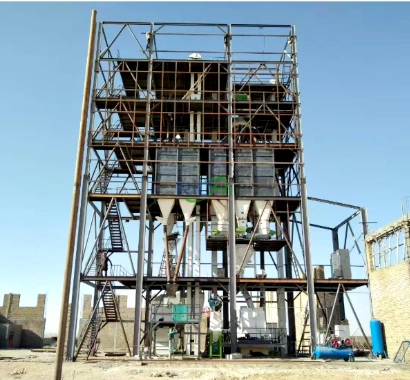
2024.10
10 T/H Pig Premix Feed Mill for Sale Netherlands
- Project Description: A Dutch pig feed plant constructed a 10T/H premix production line to meet the stable pig feed needs of pig farmers.
- Client Requirements: The equipment required a high degree of automation, stable production capacity, and the ability to quickly produce high-quality pig premix, supporting future expansion.
- RICHI Solution: Customized 10T/H pig premix feed pellet mill with automatic batching and intelligent monitoring for efficient and precise production.
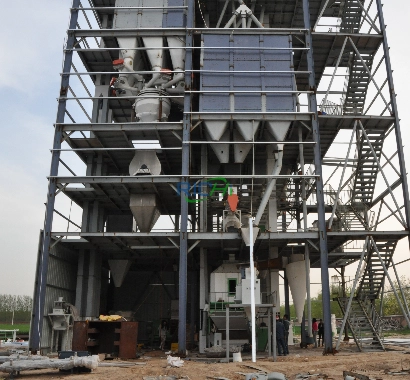
2022.05
10-13 T/H livestock Premix Feed Mill for sale UK
- Project Description: A UK feed processing group is building a new livestock premix pellet mill with a daily output of 10-13 T/H to serve the local and surrounding markets.
- Client Requirements: The equipment requires high capacity, high efficiency, and versatility, allowing for rapid switching between different animal premixes to ensure quality and production capacity.
- RICHI Solution: Provides a 10-13 T/H multi-functional livestock premix feed pellet mill with a modular design that supports rapid formulation adjustments and is energy-efficient and stable.
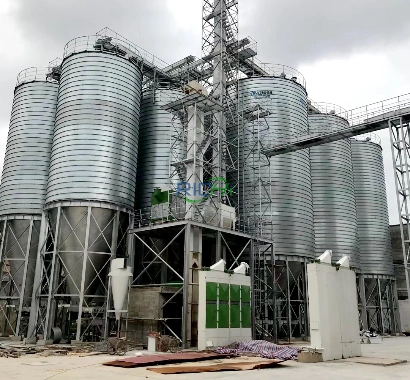
2023.05.07
15-18 T/H Animal Premix Feed Mill for sale US
- Project Description: A large US animal feed company is investing in a 15-18T/H premix pellet mill to meet the needs of rapid market expansion.
- Customer Requirements: The equipment requires high production capacity, intelligent operation, and easy maintenance to ensure production continuity and product uniformity, while also reducing energy consumption and consumption.
- RICHI Solution: Supplying a 15-18T/H animal premix feed pellet mill equipped with automatic control and a high-efficiency mixing device, ensuring high and stable production, energy conservation, and environmental protection.
Common premix formula of premix feed mill reference
A proper premix formulation is key to producing high-quality feed in a premix plant. The following summarizes four commonly used and typical premix formulas, covering the nutritional requirements of laying hens, dairy cows, cattle, sheep, and calves and lambs, to help you design and apply them effectively.
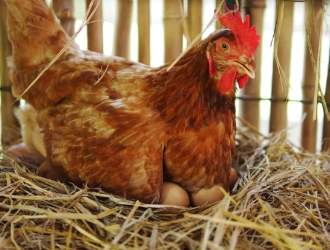
Premix Formula for Laying Hens (5%)
Laying Hen Multivitamins 0.75kg, Laying Hen Trace Elements 6kg, Choline 3kg, Salt 9kg, Phytase 0.3kg, Methionine 3.6kg, Dicalcium Phosphate 27kg, Antioxidant 0.5kg, Zeolite Powder 88.85kg, Total 150kg.
This formula is designed to supplement the vitamins and minerals required by laying hens, promoting health and increasing egg production.
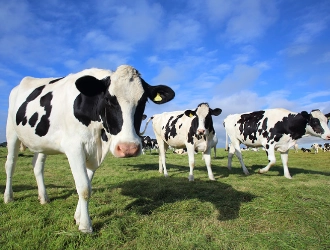
Dairy Cow Premix Formula (5%)
Trace elements 0.4kg, baking soda 10kg, magnesium oxide 6kg, salt 20kg, rock powder 30kg, calcium hydrogen phosphate 24kg, zeolite powder 5.6kg, total 150kg.
This formula provides essential minerals for dairy cows, helping to maintain their health and improve milk production.
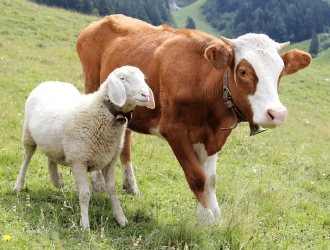
Trace element premix formula for cattle and sheep (2%)
Multivitamins 1.5kg, trace elements 15kg, salt 75kg, baking soda 37kg, magnesium oxide 21kg, antioxidant 0.5kg, total 150kg.
This formula is tailored to the growth needs of cattle and sheep, supporting balanced nutrition and healthy development.

Calf and Lamb Premix Formula (1%)
4.5kg of dairy cow multivitamins, 30kg of trace elements for cattle and sheep, 45kg of salt, 0.5kg of antioxidants, and 70.5kg of zeolite powder, for a total of 150kg.
This formula is specifically designed for calves and lambs to enhance immunity and promote healthy growth.

FAQ about the premix feed mill
Processing points for feed mixing plant
Premix as a more sophisticated additive feed, there are more factors that need to be strictly controlled during processing. On the one hand, because premix is more expensive, it is necessary to reduce the waste of raw materials in the process. On the other hand, premix is mainly mixed with feed to supplement the nutrients that feed can provide.
1. Selection of formula
First of all, it is necessary to mix the appropriate premix formula according to the different seasonal environments of different animals. Accurate and professional premix formulation is the key to premix production.
2. Accuracy of dosing
After the formula is finalized, the accuracy of the ingredients must also be strictly controlled. Most of the materials involved in premix plant are trace ingredients, with very small dosage, some even extremely trace, and the safe dose is very close to the poisonous dose, such as selenium, so the dosage precision requirements are very high. A small dosing error is a prerequisite for the production of high quality premixes. In order to achieve this goal, we must use high-precision dosing instruments, such as electronic scales; design a reasonable weighing process, such as the use of multi-stage dilution and mixing, group dosing process, and even micro-ingredients of certain levels of micro-ingredients can be weighed with micro-balance inside the preparation room to ensure that the weighing is accurate.
3. Mixing uniformity
Premix processing requirements for mixers are also relatively high, mixing uniformity is an important indicator of the quality of premix processing. Reasonable dosage system, to ensure the standard of its total amount, but it is very likely to be mixed unevenly, and still can not meet the dosage system, to ensure the accuracy of its total amount, but a lot of possible mixing unevenly, and still can not meet the quality indicators. For premix, because it is a highly concentrated intermediate product, it has to be continuously diluted and expanded in the post-processing, so the unevenness of the former section may turn into incorrect proportioning in the latter section of the process. This requires both the selection of high-efficiency, low-residue mixer, but also must design a reasonable mixing process.
4. Selection of processing technology
Premix how to process, the specific processing process to find a professional premix plant. Under the premise of helping to ensure the quality of the finished product, the processing process should be as short as possible, and can reduce the pollution and grading caused by long-distance transportation.RICHI Machinery’s professional team can customize the premix plant process for you. All you need to do is to tell us your raw material, your production requirements and we will customize your premix plant to meet your actual needs.
5. Configuration of processing equipment
In premix, in addition to a portion of grain-based raw materials or their by-products, the rest of the varying degrees of chemical activity, some even corrosive effects, and in turn, the materials used in the manufacture of the equipment may also affect the potency of certain ingredients. Therefore, where the high concentration of active ingredients in contact with the processing equipment, piping and hoppers, etc. are appropriate to choose the right material, such as stainless steel.
6. Packaging
Packaging not only affects the product image, but also has an impact on the quality of the premix, especially in the premix of some trace components in the storage process will gradually change, lose activity. For this reason, packaging materials should be non-toxic, harmless, sturdy, moisture-proof, light-proof materials, tightly packed, beautiful, strictly prevent mixing.
Difference between premix feed mill and Powder feed mill
Pre-mixed feed mills and powder feed mixing plants are both related and different. They differ mainly in:
1. Raw materials are different:
The raw material of premix plant processis one or more trace elements composed of additives. The raw material of powder plant is all kinds of feed ingredients.
2. Usage is different:
The premix produced by the premix plant is mainly used to dilute the additives and feed mixes evenly, can not be directly used for feeding animals. The powdered feed produced by the powder feed mixing plant can be used directly for feeding animals.
3. Processing process is different:
Premix plant processing process is mainly a variety of trace elements additives and carriers or diluents for mixing, the main point of processing is accurate ingredients, mixing evenly. The key machines and equipment used in the premix plant process are mixer and dosage scale. The processing process of the powder plant is to prepare the raw materials first through the grinder for crushing, and then through the conveyor equipment to the mixer for mixing, the mixing process can be added to the premixer mixing uniformly, the generation of direct full-price powder feed.
4. The host equipment is different, and the material is also different:
The host equipment of premix plant is crusher, mixer, dosing scale, all stainless steel silo. And the host equipment of powder plant is crusher, mixer. The premix plant has higher requirements on the material of the host equipment, because the premix plant has expensive raw materials and high requirements on the material of the processing equipment.
5. price is different
It can also be seen that the price of premix plant is higher than the price of powder plant. Because the configuration of the production line premix will have higher requirements.
RICHI MACHINERY
Why Choose RICHI Machinery
Choosing RICHI Machinery means you’ll receive not only high – quality equipment but also one – stop solutions and comprehensive service support. Here are some key reasons to choose us:

30 years of industry experience
Since its establishment in 1995, RICHI Machinery has amassed 30 years of rich experience in the design, production, and R & D of animal feed mill plant. With our profound technical accumulation and global development, we can provide our customers with reliable equipment and solutions.

Customized turnkey solutions
We offer a complete turnkey production line, covering project design, equipment manufacturing, installation and commissioning, and personnel training, according to your specific needs. Whether it’s a small farm or a large feed factory, we can tailor a suitable production plan for you.

Complete after – sales service
We have a comprehensive after – sales system, providing you with all – round services from pre – sales consultation to after – sales maintenance. This includes professional and systematic training to help you quickly master equipment operation and maintenance skills and maximize project requirements.

Built Around Your Needs
We can create customized turnkey pellet production line projects based on your unique requirements. For example, we provided customized technical solutions and operation training for the premix feed mill to help the production line operate stably in the long term. You can find us on YouTube.

